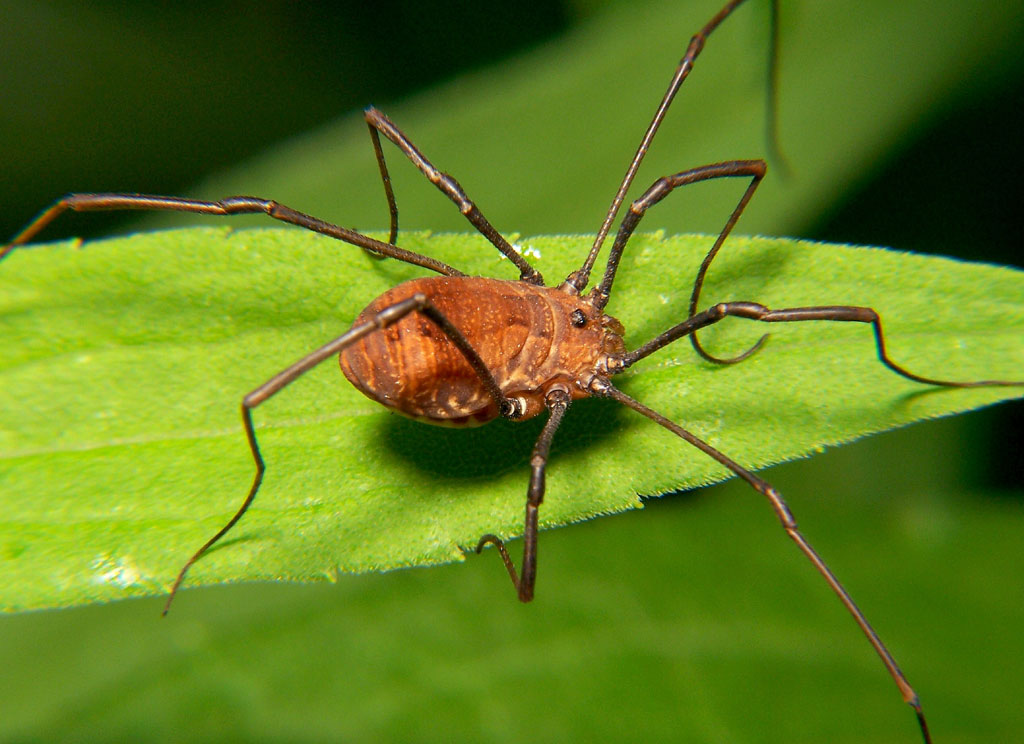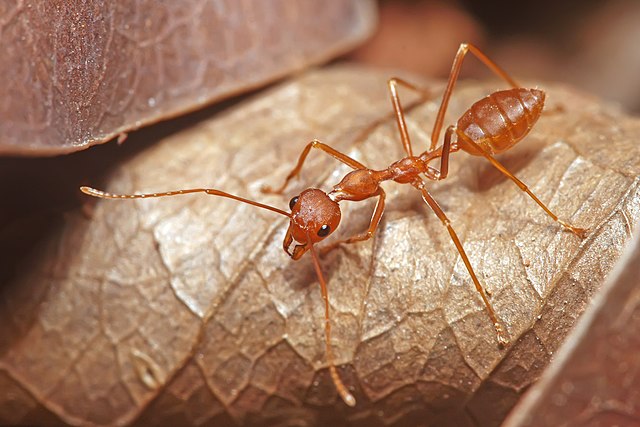There are more than 45.000 spider species in the world. Certain characteristics such as having 8 legs are common for all spiders. However, some bugs that look like spiders closely and the differences between the species might not be immediately visible.
Table of Contents
1. Spider Crickets
Also known as Cave crickets, Spider crickets are known for living in caves and woodlands. Not commonly seen as the species is nocturnal, Spider crickets are some of the bugs that mostly resemble spiders.
These spiders are mostly confused with wolf spiders. However, Spider crickets only have 3 pairs of legs instead of 4 pairs of legs.
Known for its tan-brown color, these bugs grow up to 2 inches.
They are also known for having the ability to jump so getting up close isn’t recommended.

It’s believed Spider crabs made their way to North America from Asia.
They have changed and increased their natural habitat from caves to cellars and even woodlands wherever they can find a cool damp place to live in.
Part of the Ensifera group of insects, Spider crickets are now commonly seen in US homes. They are a group of accidental invaders just as many other types of bugs and pests.
Most Spider crickets found in homes live in basements and damp places out of direct sunlight.
2. Spider Beetles

These bi-colored insects get their name from resembling Crab spiders. They also exhibit a large rounded abdomen.
Spider beetles have a black abdomen and an orange-read thorax. They have 3 pairs of legs and they can be found in man-made structures.
There are multiple Spider beetle types in North America such as the American Spider Beetle.
Most of these species resemble spiders. They’re common in states such as Colorado where they’re seen as pests.
Spider beetles have a varied diet but they prefer grains. This is why they often invade granaries across the South.
3. Harvestmen

Also known as Opiliones, Harvestmen are mostly confused with spiders of the Araneae genus. Distinctions between Harvestmen and Araneae spiders are seen in body shape and number of eyes.
Harvestmen have a 1-piece body and multiple eyes in 2 rows. Araneae have at least 3 pairs of eyes.
This species of Arachnids is known for having a wide diet that includes dead and alive insects.
They are normally found hanging upside down under leaves where they await to trap any insects they can.
However, Harvestmen aren’t considered a pest and they’re even an endangered species in states such as California.
4. Solifuges

These large bugs in the class of Arachnida are often confused with spiders or scorpions. They prefer to live in dry climates and to feed on small insects and animals.
Growing up to 6 inches, Solifuges are often confused with real spiders even by spider collectors.
It has 4 pairs of legs that confuse the average spider collector. However, only 2 pairs of legs are actual legs.
The species is somewhat elusive. It’s nocturnal which means it can’t be seen easily around daytime.
Solifuges also move fast which makes them difficult to capture.
5. Whip Spiders

Whip spiders are found in tropical and sub-tropical climates. They get their name from the adaptations of the first pair of legs which resemble whips.
These long legs are used for guidance, similar to how cockroaches use antennae for moving around and finding out various terrain textures.
These Amblypygi bugs are recognized by a flat gray body. They are sometimes confused with crabs and spiders.
Whip spiders are largely nocturnal. They live under leaves and underground.
These crab-like bugs are known for eating other spiders. They attach themselves to a line of silk hanging upside-down waiting for a spider to pounce on.
6. Vinegaroons

Vinegaroons are also known as whip scorpions. They are routinely confused with scorpions and Whip spiders.
They have 4 pairs of legs and long mandibles similar to the pincers of scorpions. These bugs also have a front pair of legs that are used for sensorial purposes similar to whips.
Common in Australia and Europe, these Aarachnida genus bugs are mostly black. They are known for consuming insects, spiders, and even scorpions.
Mating habits are also specified within the species. Males hold down females using their chelicerae.
Females only lay eggs inside the ground. However, the female is one of the few species known for sealing itself inside the underground burrow with the eggs.
7. Ricinulei

Ricinulei is common in West Africa. These Arachnida are known for an orange-tan color and a dark brown color. They are almost black as adults.
They are part of the Arachnida micrura genus which also includes Whip spiders.
The species is known for having a large body of up to 10mm with a thick abdomen and thick legs. The bulbous abdomen makes the species resemble spiders.
The preferred habitat of the genus is in woodlands where it hides in leaves.
Ricinulei can be hard to spot in leaves as it has a dark brown to black body and legs of a similar color.
The head and thorax dimensions are small compared to the dimensions of the flattened abdomen.
8. Pseudoscorpions

These bugs are routinely confused with either scorpions or spiders. However, they are Arachnids and not scorpions or real spiders.
Pseudoscorpions are recognized by an elongated round body and pedipalps that resemble scorpions.
Unlike real scorpions, these Arachnids have no tail. They are also smaller than all scorpions as they grow to a size between 2 and 5mm.
Often making their way inside homes near woodlands and grasslands, these Arachnids are generally beneficial to humans due to their diets.
Pseudoscorpions eat carpet beetle and cloth moths.
Most pseudoscorpions are found at ground level in leaves while a smaller percentage of the species is arboreal.
These Arachnids are known for living 2 to 3 years. They enter a hibernation-like statein the winter. Pseudoscorpions build silk-made cocoons around them o shelter themselves from cold weather in the winter.
9. Ants

Some ants closely resemble spiders. Myrmarachne-family spiders are known for mimicking ants.
These bugs are part of the Salticidae family and are known to mimic ants in aspect and behavior.
Known for its long black ant-like body, the bugs even mimic the zig-zag movement pattern of ants.
The slender body also makes these types of bugs escape predators easily as they can get away quicker.
It’s believed there are 14 types of jumping spiders that resemble ants and which may as well be taken for ants.
10. Ticks

Ticks are not insects as many would believe. They are Arachnids just as spiders.
Both ticks and spiders have 4 pairs of legs.
There are 2 types of ticks that look similar. Both hard and soft ticks are smaller than spiders and they have a large abdomen and a small head. However, the head of ticks is considerably smaller than the head of spiders about the abdomen.
The habitat can be similar for both spiders and ticks as both prefer humid environments.
However, ticks are known for having impressive resilience as they can go a long time without a meal.
Ticks can go paused feeding up to 18 weeks at a time. They can also survive extreme vacuum conditions as they have slower metabolism compared to many spiders.
Another way to separate ticks from spiders is to assess the weather. Ticks can survive temperatures as low as 0 °F.
11. Crane Flies

Crane Flies are commonly confused with Cellar spiders. The name of Daddy Longlegs is also attributed to body Crane Flies and to Cellar spiders which leads to confusion.
Furthermore, there are many other insects also known as Daddy Longlegs which can create confusion between the species.
Another common perception is that Crane Flies are venomous.
One way to distinguish Crane Flies from typical Cellar spiders is by analyzing their habitat. Crane Flies prefer to live next to water sources.
Many Crane Flies species are further seen next to decaying vegetation such as decaying wood which also makes some people confuse the species with mosquitoes.
Most types of Crane Flies are associated with crops when not tied to a semi-aquatic habitat. Species such as the Common European Crane Fly have known pests.
These flies aren’t predatory as spiders but they feed on the roots of various crops.
12. Thread-legged Bugs

Part of the Reduviidae family, Thread-legged bugs are predatory insects. These nocturnal bugs resemble spiders with elongated bodies and long legs.
Its resemblance to spiders isn’t the only connection to Arachnids as Thread-legged bugs found in tropical climates regularly prey on spiders.
There are a few thousand species of Thread-legged Bugs that mostly resemble multiple types of spiders.
For example, Assassin bugs of the Reduviidae family are known to resemble crab spiders.
These orange, brown, and white spiders are known for growing up to 50mm. With their long legs, these are true predators.
Like most types of Thread-legged bugs, Assassin bugs have a long beak that is used to suck the liquids out of insects.
Preferred insects include the typical prey caught up in spider webs such as flies but also spiders themselves.
Further Reading: